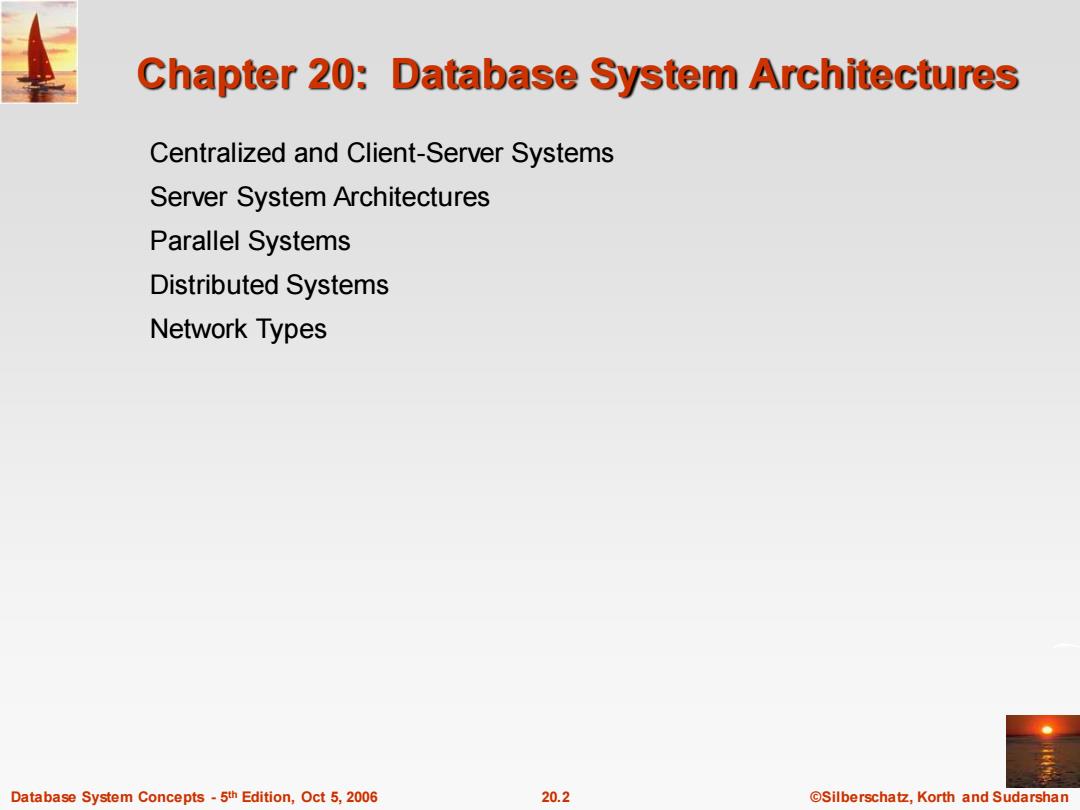
Chapter 20:Database System Architectures Centralized and Client-Server Systems Server System Architectures Parallel Systems Distributed Systems Network Types Database System Concepts-5th Edition,Oct 5,2006 20.2 @Silberschatz,Korth and Sudarshan
Database System Concepts - 5 20.2 ©Silberschatz, Korth and Sudarshan th Edition, Oct 5, 2006 Chapter 20: Database System Architectures Centralized and Client-Server Systems Server System Architectures Parallel Systems Distributed Systems Network Types
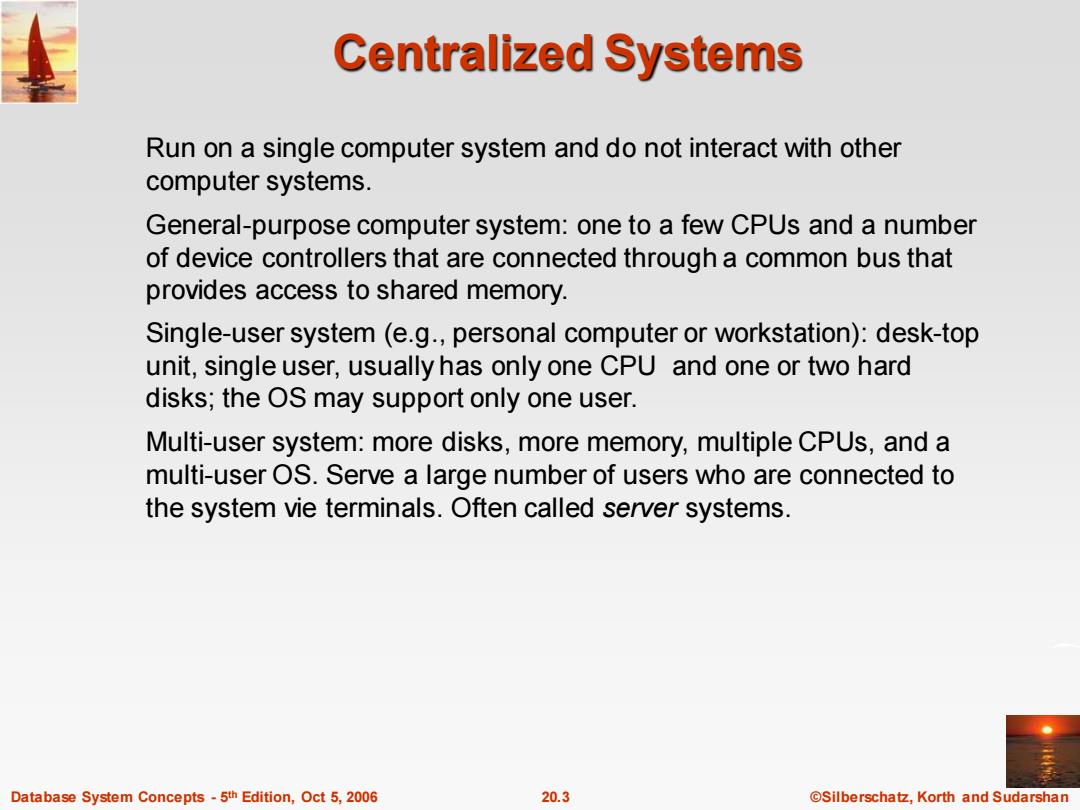
Centralized Systems Run on a single computer system and do not interact with other computer systems. General-purpose computer system:one to a few CPUs and a number of device controllers that are connected through a common bus that provides access to shared memory. Single-user system (e.g.,personal computer or workstation):desk-top unit,single user,usually has only one CPU and one or two hard disks;the OS may support only one user. Multi-user system:more disks,more memory,multiple CPUs,and a multi-user OS.Serve a large number of users who are connected to the system vie terminals.Often called server systems. Database System Concepts-5th Edition,Oct 5,2006 20.3 @Silberschatz,Korth and Sudarshan
Database System Concepts - 5 20.3 ©Silberschatz, Korth and Sudarshan th Edition, Oct 5, 2006 Centralized Systems Run on a single computer system and do not interact with other computer systems. General-purpose computer system: one to a few CPUs and a number of device controllers that are connected through a common bus that provides access to shared memory. Single-user system (e.g., personal computer or workstation): desk-top unit, single user, usually has only one CPU and one or two hard disks; the OS may support only one user. Multi-user system: more disks, more memory, multiple CPUs, and a multi-user OS. Serve a large number of users who are connected to the system vie terminals. Often called server systems
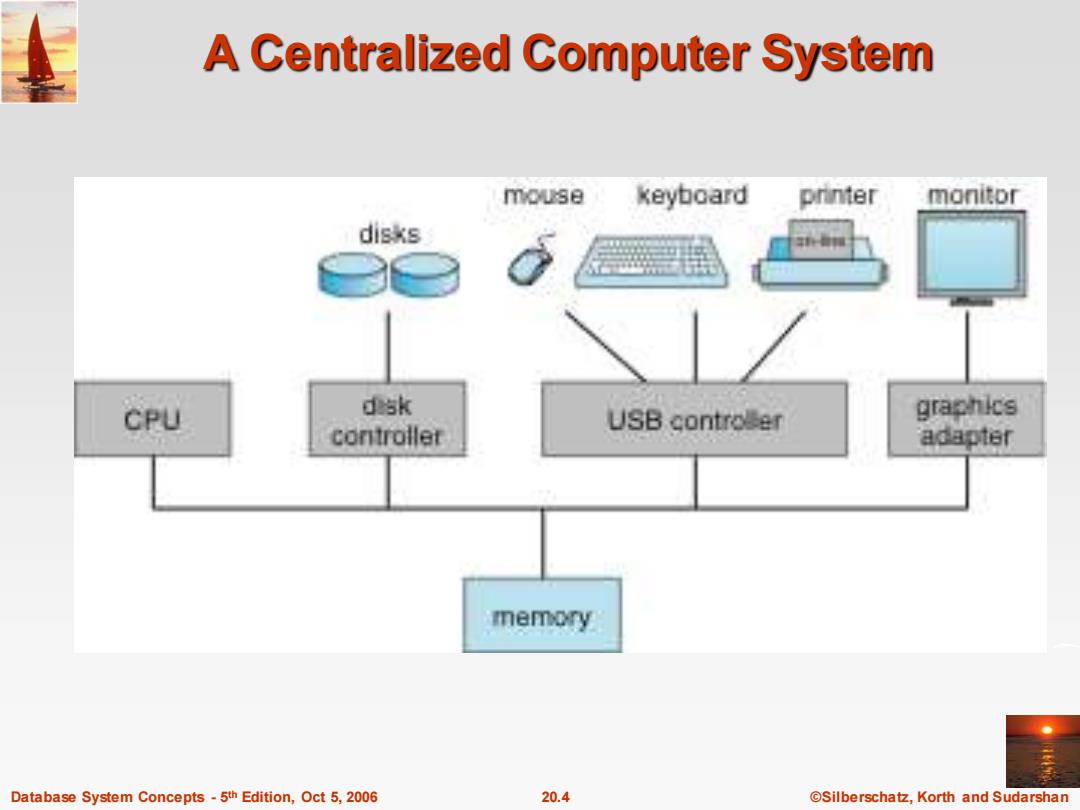
A Centralized Computer System mes日 keyboard onnter monitor disks CPU desk USB controler graphics controllet adapter memory Database System Concepts -5th Edition,Oct 5,2006 20.4 @Silberschatz,Korth and Sudarshan
Database System Concepts - 5 20.4 ©Silberschatz, Korth and Sudarshan th Edition, Oct 5, 2006 A Centralized Computer System
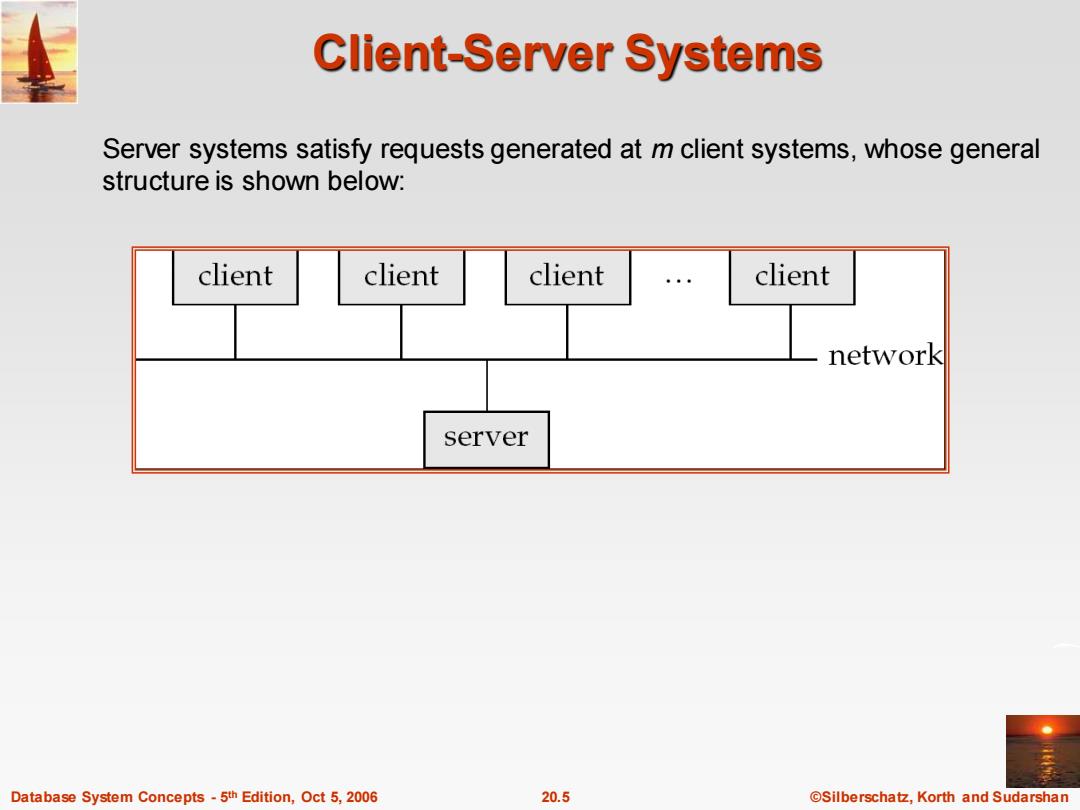
Client-Server Systems Server systems satisfy requests generated at m client systems,whose general structure is shown below: client client client client network server Database System Concepts-5th Edition,Oct 5,2006 20.5 ©Silberschat乜,Korth and Sudarshan
Database System Concepts - 5 20.5 ©Silberschatz, Korth and Sudarshan th Edition, Oct 5, 2006 Client-Server Systems Server systems satisfy requests generated at m client systems, whose general structure is shown below:
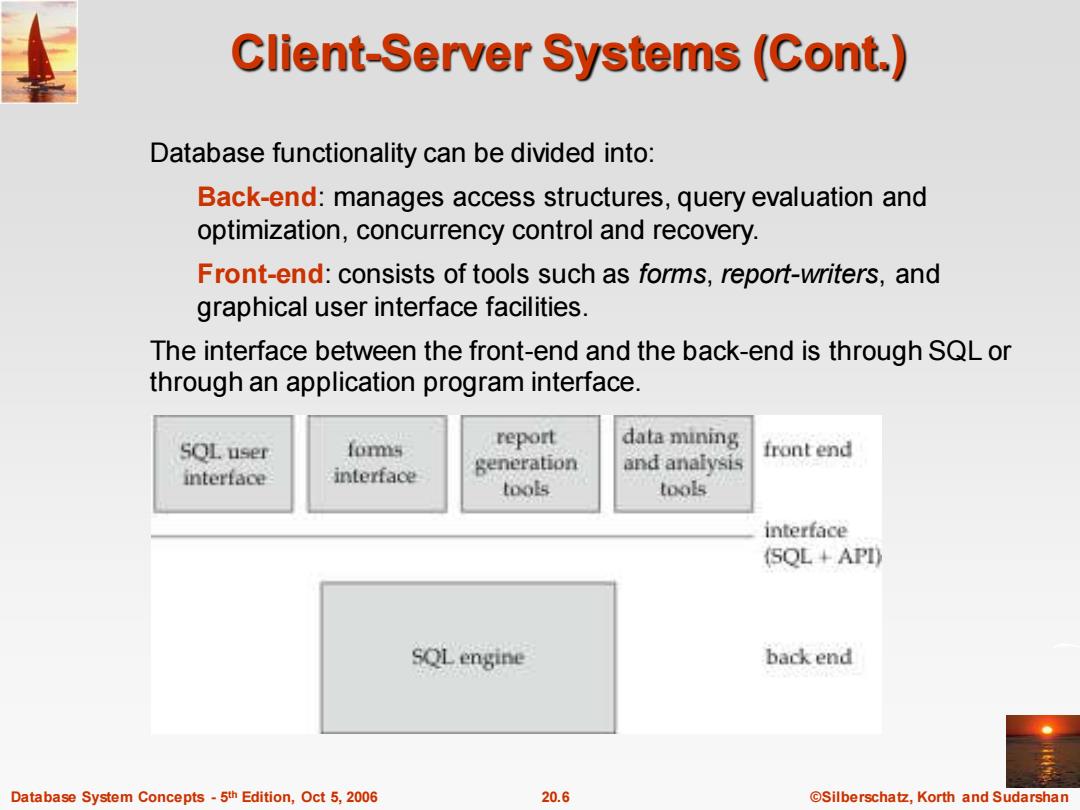
Client-Server Systems(Cont.) Database functionality can be divided into: Back-end:manages access structures,query evaluation and optimization,concurrency control and recovery. Front-end:consists of tools such as forms,report-writers,and graphical user interface facilities. The interface between the front-end and the back-end is through SQL or through an application program interface. SOL user fors report data mining front end generation and analysis interface interface tools tools interface (SQL API) SQL engine back end Database System Concepts-5th Edition,Oct 5,2006 20.6 ©Silberschat乜,Korth and Sudarshan
Database System Concepts - 5 20.6 ©Silberschatz, Korth and Sudarshan th Edition, Oct 5, 2006 Client-Server Systems (Cont.) Database functionality can be divided into: Back-end: manages access structures, query evaluation and optimization, concurrency control and recovery. Front-end: consists of tools such as forms, report-writers, and graphical user interface facilities. The interface between the front-end and the back-end is through SQL or through an application program interface